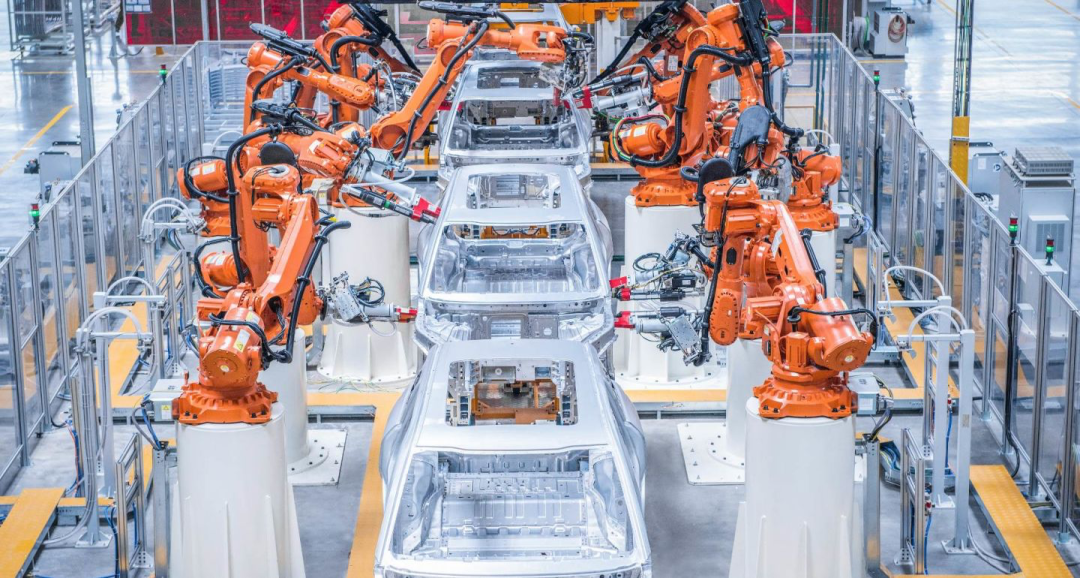Shen Shen
Stubborn and paranoid as I am, I firmly believe that all humans must love giants – there is something about standing beneath the massive, looming bulk of a giant machine that makes our souls feel as if they have discovered a sort of escape.
Elon Musk stated a few years ago that “the machine that makes the machine is more complicated than the machine itself”. Having visited some car manufacturing plants, I wholeheartedly agree with him. The awe-inspiring sight of robotic arms and esoteric machinery wrapping around each other often leaves onlookers unconcerned with the unformed car bodies gliding along the assembly line.
It made me start to think that the allure of industry doesn’t necessarily lie in the products it creates, but possibly in the places that birthed them. I would even venture to say that factories where cars are built hold the truest attraction of all.
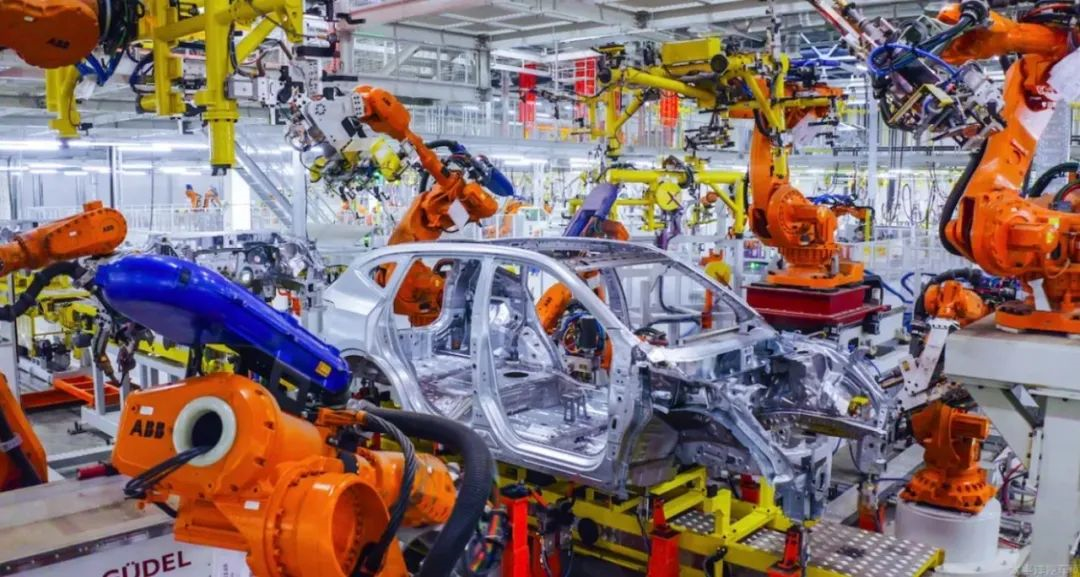
The Biggest on Earth: Tesla’s Factory
When it comes to factories, the first one that comes to mind is Tesla’s newest facility in Texas. Just last week, billionaire and Twitter shareholder Elon Musk attended the factory’s opening ceremony, driving his own Tesla in jeans and western boots.
Musk already owns quite a few factories, and at the beginning of this year, he announced that the focus of Tesla’s plans for the year would be to increase car production rather than introduce new models. With this new factory in Texas, Tesla now has six “Gigafactories” in Asia, Europe, and North America. Of these, the new factories in California, Shanghai, Berlin, and Texas are responsible for producing entire cars, while the Nevada and New York plants handle battery packs, charging stations, and solar roof productions.
Musk compared the Texas factory to “a computer chip, where all the elements are packed together”. He hopes that the utilization of land at the Texas site will exceed that of the California one. More than that, he dreams that this new factory can feature a seamless integration of stamping, welding, painting, and final assembly. The goal is for the Texas factory to realize the Raw materials in, cars out production process, presenting a novel automotive manufacturing procedure.
Whether or not they achieved such goals, some of Musk’s comments during the opening ceremony in Texas give us a glimpse into the situation at the factory.
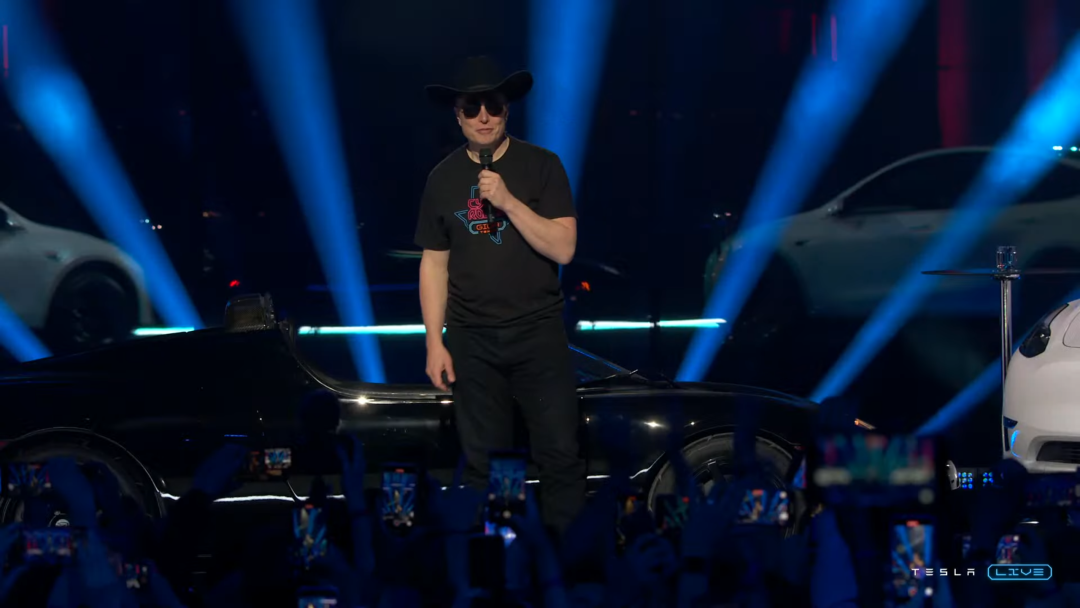
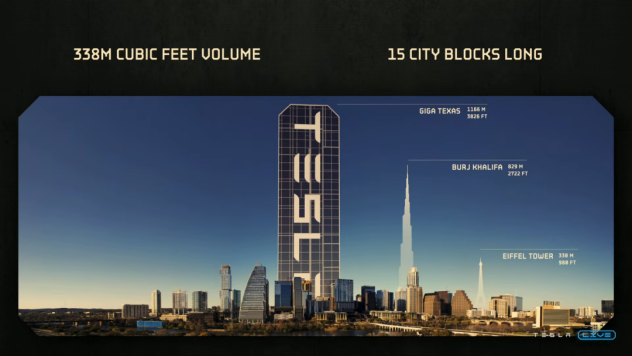 It is currently the world’s largest factory building. If it is completely erected, the total length is 1,166 meters which is 337 meters higher than the world’s tallest building, the Burj Khalifa, equivalent to the space that can accommodate 194 billion hamsters (although I don’t know how that was calculated, it does not include guinea pigs).
It is currently the world’s largest factory building. If it is completely erected, the total length is 1,166 meters which is 337 meters higher than the world’s tallest building, the Burj Khalifa, equivalent to the space that can accommodate 194 billion hamsters (although I don’t know how that was calculated, it does not include guinea pigs).
The layout of the entire plant is similar to that of a chip. Comparing the layout map of the Texas factory with that of Fremont, the land use efficiency and foreseeable work efficiency of the two are evident. Anywhere in the factory’s display area, you can see a structural model of 4680 batteries, with display areas for single battery cells, as well as for the integration of battery cells and chassis, which means that when the body and suspension are in place, the chassis instantly transforms into a new car.
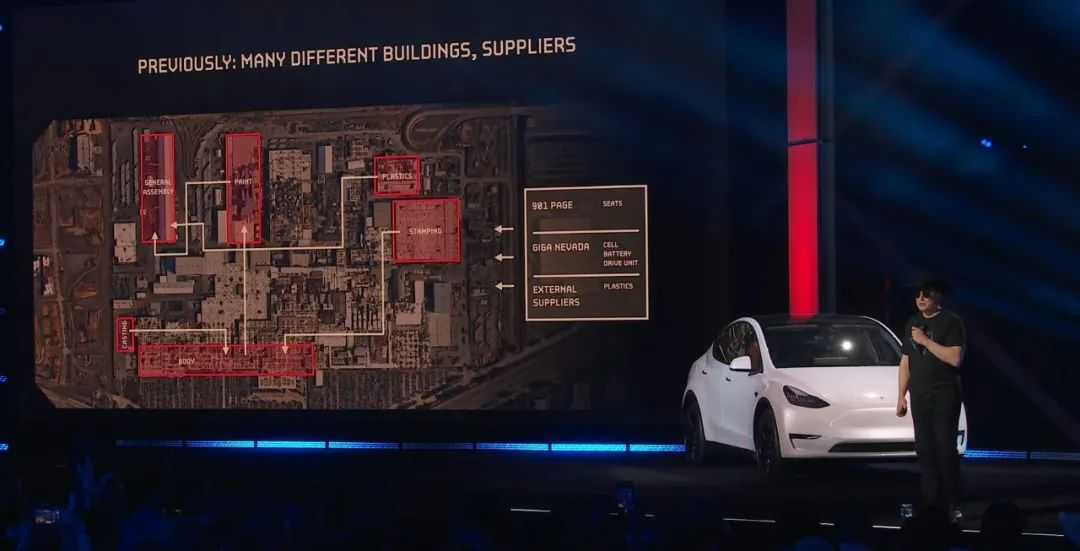
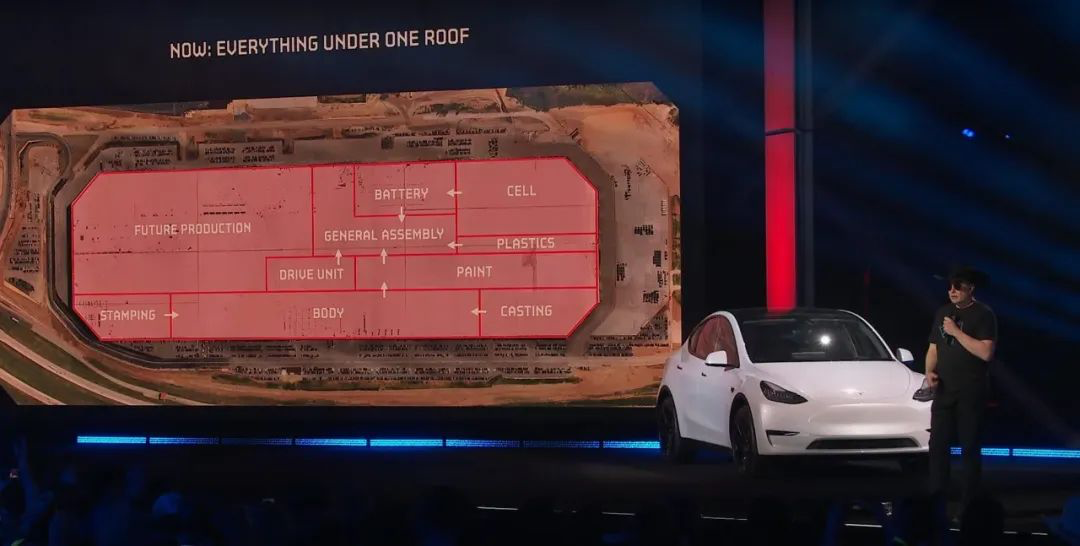
The integrated casting is the biggest highlight of the Texas factory. “Integrated casting” is a process where a super large casting machine directly compresses 70 parts into two large aluminum castings, reducing the number of connection points from 700-800 to 50, and the manufacturing time from 1-2 hours to 3-5 minutes. Its characteristics are: more, fast, good, and cost-saving.
Tesla has 2 6,000-ton integrated casting equipment in its California factory, and 3 integrated casting equipment in the Shanghai Super Factory. The recently unveiled Texas factory has a direct 8,000-ton casting equipment, and the Berlin factory plans to arrange 8 integrated casting equipment for 500,000 production capacity.
It is worth mentioning that Tesla searched many global suppliers at that time. Only IDRA in Italy could provide Tesla with the specific casting machines they needed, and this company was acquired by Hong Kong LK Group in 2008. To some extent, all the Tesla electric cars we purchase have the “Made in China” mark.
In short, Ma’s description of the Texas plant is that it is the most advanced car factory ever on earth, and the technology of this plant is “extraterrestrial technology” (this man still loves aliens). Regardless of whether it is extraterrestrial or not, according to the peak production efficiency of the Texas factory, it only takes 45 seconds to produce a Tesla car. It should be noted that even veteran Mercedes-Benz C-Class requires 70-90 seconds to produce one car. In a sense, Musk and the Texas factory have achieved some kind of extreme in the manufacturing industry.
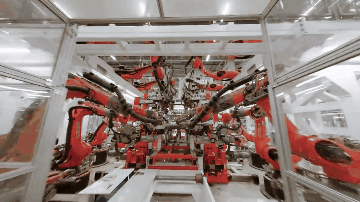 # BMW Factory, a 4A Tourist Attraction
# BMW Factory, a 4A Tourist Attraction
BMW factories are the most controversial on Zhihu.
BMW has many factories worldwide, but the most important one is the Munich factory. Since 1922, it has produced BMW vehicles and engines, including the new generation of the BMW M3 (G80), 3 series, and its plug-in hybrid models (G20/G21). The BMW electric car i4 is also produced in the Munich factory.
Other factories include the Dingolfing factory that produces many BMW models, the Leipzig factory opened in 2005 that mainly produces the BMW X1 and other models, the Regensburg factory that produces the BMW X1 and other models, the Landshut factory that produces many BMW components, the Steyr factory, the world’s largest BMW engine factory, the Berlin motorcycle factory that specializes in producing BMW motorcycles, the Eisenach factory that mainly produces large stamping tools and body panels for the car body, and the Spartanburg factory in the United States. Additionally, there are also factories located in Mexico, South Africa, Thailand, as well as the MINI plants in the UK and Germany, and the Rolls-Royce Goodwood factory.
Why is BMW so controversial on Zhihu? Because there are many factories like BMW, but the second-largest BMW factory in the world is the Shenyang Tiexi factory in China, and people wonder why it is the second-largest.
Apart from the factory itself, the BMW Tiexi factory is a 4A-level tourist attraction in China’s automotive manufacturing industry, undoubtedly representing the epitome of this industry.
BMW has two factories in Shenyang, one is the Tiexi factory, and the other is the Dadong factory. The Dadong factory was recently upgraded, and one out of every four BMWs produced worldwide is now made in Shenyang. The biggest attraction of the BMW Shenyang factory is its digitization, the car production process revolves around data science, artificial intelligence, and virtual planning.
From 2010 to now, BMW Brilliance Automotive Ltd. has invested nearly RMB 83 billion in Shenyang to build this R&D, procurement, powertrain, and vehicle production integrated system, making Shenyang the largest production base of the BMW Group.At BMW’s Shenyang factory, you can see the four major workshops, including stamping, bodywork, painting, and assembly, as well as the single-roof logistics and final assembly workshop with two independent production lines. The body shop is equipped with KUKA’s largest TITAN robot, with a carrying capacity of up to 1.3 tons, which can skillfully grasp and place the body and ensure the stability of the body with a movement repeatability accuracy of 0.1 millimeters.
The most impressive feature of the Huachen BMW powertrain factory is the AI vision inspection system, which applies AI technology to detect small defects on the engine cylinder head surface, with an accuracy rate of up to 99.7%. This technology is also applied to seam gap data analysis and online geometry inspection of each body, predicting quality data flow and adjusting quality issues in the production process in a timely manner.
The busy AGVs (unmanned transport vehicles) inside the factory are also a highlight. They can automatically place orders based on production requirements. Currently, 20 AGVs can complete more than 300 picking orders per hour, freeing up many employees who were previously busy with picking orders and upgrading the traditional “person-to-pick” to “goods-to-person” system.
BMW has also established a digital platform that aggregates dispersed equipment, technology, and system data for processing and analysis, and applies them in different scenarios. It also uses 3D modeling, VR (virtual reality technology), and virtual debugging and other digital tools to create digital twins in the virtual world for development and testing of products and factories, and apply them in real-life applications, thereby improving planning and development efficiency.
To put it simply, BMW not only has a physical factory but also created a virtual factory online. VR technology training was provided to employees to allow them to intuitively understand the internal structure of parts through 3D images provided by the VR system, which can be used for simulating disassembly and assembly, improving learning efficiency and enhancing technical operation skill, thereby improving employee engineering capability and factory production efficiency and quality.
Every aspect of the factory is used to improve product quality as much as possible, while simultaneously freeing employees from tedious and single tasks. The future created by the BMW factory is the future that people would love to see in the future of car manufacturing.
The factory representative of the new trend in car manufacturing.# NIO’s Factory – A Must-See in the New Wave of Electric Vehicle Startups
NIO’s CEO, William Li, once claimed in an interview that “JAC (Jianghuai) invested tens of billions to build a brand-new world-class factory. Porsche’s factory is no match for ours. Don’t think I’m talking nonsense, I went there in person.” Despite Porsche’s counterattack in an article titled “This Is the Future of Car Factories,” NIO’s factory is still worth a visit among a sea of electric vehicle startups.
NIO’s factory is a joint venture with JAC, but NIO has never produced vehicles in partnership with JAC. Instead, they collaborate in production using their factory, which builds all-aluminum car bodies and is among the top-tier of the new players in the industry.
The construction of NIO’s Hefei factory began in 2016 and the production line was completed in less than 14 months in December 2017, an impressive feat that typically takes around two years in the industry. The factory includes four major workshops: stamping, body, painting, and final assembly, in addition to the all-aluminum car body production line, which was customized based on the features of NIO’s vehicle models.
The stamping workshop, for example, produces 21 different stamping parts, which is more than what traditional stamping workshops produce. Also, as most of the body sheets are already made in other facilities, this workshop specializes in more complex and precise parts. The workshop covers an area of 12,672 square meters and can generate a servo-mechanical power of up to 2,500 tons.
The welding workshop is another highlight of NIO’s factory, boasting 307 robots that can achieve 100% automation of the body’s main connections, with an overall automation rate of 97.5%. The remaining non-automated work is done by a combination of engineers and welding robots, with engineers in charge of programming and robots responsible for welding tasks. The welding workshop covers an area of 64,800 square meters, equivalent to that of nine standard football fields.
Additionally, the painting workshop, covering an area of 20,724 square meters, features 43 fully automated robots and 41 painting robots, 6 gluing robots, and 2 LASD gluing robots.The final assembly workshop is mainly managed digitally. All electric tools are equipped with sensors to provide intelligent guidance and prevent errors, ensuring that every start-up follows the programmed design. In case of exceptions, the system will automatically alert and stop the production line, ensuring that the torque is 100% qualified and there are no problems with the overall vehicle quality.
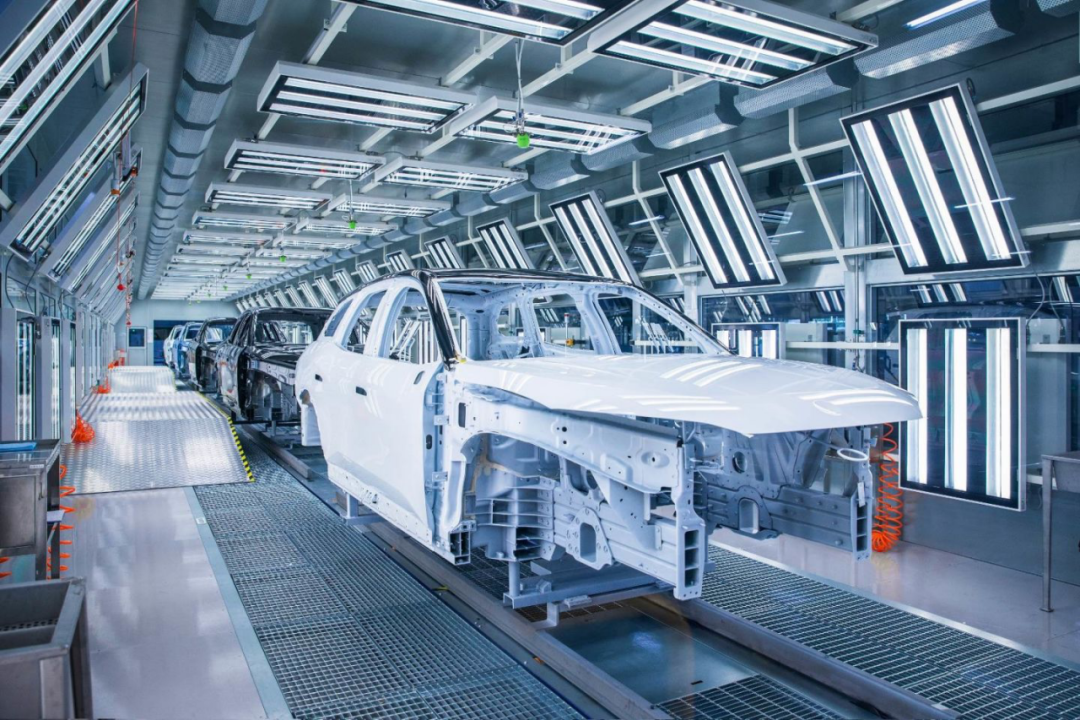
Although Li Bin’s statement of “letting go of oneself” in an interview with Nio’s factory is relatively modest compared to that of Porsche’s factory, Nio’s factory is still standing strong. Recently, on April 14th, after announcing a production suspension of 5 days, Nio’s relevant personnel have revealed that they will gradually restart production. However, the subsequent production plans still depend on the supply chain recovery situation.
During the epidemic, people still hope to see the giant robotic arms regain their vitality, so that the editors of various automobile industry information in Shanghai can leave their neighborhoods, embrace the sun, and continue to contribute to the ordinary cause of transporting automobile industry information (crying behind the mask).
This article is a translation by ChatGPT of a Chinese report from 42HOW. If you have any questions about it, please email bd@42how.com.
